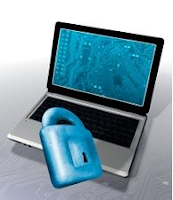This blog is now located at Your QuickBooks Coach. Please visit for us there for tips you can use in your business!
Sincerely,
Rhonda H. Smith
--Your QuickBooks Coach
Monday, June 17, 2013
Tuesday, March 12, 2013
Windows 8 and QuickBooks
If you are considering upgrading to Windows 8 or buying a new computer with Windows 8 you will have to upgrade your QuickBooks to 2013. Prior versions of QuickBooks will not work properly with Windows 8.
--Rhonda H. Smith
Your QuickBooks Coach
--Rhonda H. Smith
Your QuickBooks Coach
Wednesday, February 6, 2013
Use QuickBooks’ Tools -- and Common Sense Procedures -- To Prevent Financial Fraud
You work hard for your money. Strong internal controls
can keep it from disappearing unnecessarily.
 You trust your
employees or you wouldn’t have hired them. That’s what everyone says as they
watch a valued staff member being hauled off in handcuffs. But
I trusted him.
You trust your
employees or you wouldn’t have hired them. That’s what everyone says as they
watch a valued staff member being hauled off in handcuffs. But
I trusted him.
Whether your
accounting tasks are done on one PC or you have multiple users working on
different screens, it’s critical that you make use of all that QuickBooks
offers in terms of internal controls. You’ll also need to establish some
common-sense rules.
First Stop: Audit Trail
An audit trail is
a very large report that displays every
addition, deletion and modification of every transaction. In older versions of
QuickBooks you could turn it on and off, but it’s permanently on now.
Because of its
size, you’ll probably have to use QuickBooks’ filtering tools to zero in on the
user and/or date(s) you’re looking for. Go to Reports | Accountant
& Taxes | Audit Trail.
Click Customize
Report | Filters to set
up your search.
Your audit trail
won’t alert you when someone tries to enter a prohibited area, and it won’t
detect changes to lists. Setting up permissions will help (Company
| Set Up Users and Passwords | Set Up Users),
but you need more than that.
Figure 1: Be especially
careful when granting user access to areas that contain customer, vendor and
employee information.
Run the Right Reports
Other QuickBooks
features can help prevent fraud. Review these reports regularly:
·
Closing Date Exception. Why were those changes necessary?
·
Voided/Deleted Transactions. Is there supporting documentation?
Should you be reviewing these daily?
·
Expenses by Vendor Detail. Look for irregularities, especially
multiple payments made to a vendor in a short period of time.
·
Check registers. Use the Balance Sheet for this. Go to Reports
| Company & Financial | Balance Sheet Standard and customize the report for the correct
period and – if necessary – for specific customers, vendors and/or jobs.
Adhere to Best Practices
You undoubtedly
implement financial best practices in your personal life. You reconcile your
accounts. You don’t give your online banking password to anyone. And you glance
through your recently-posted transactions on your financial institutions'
websites.
If your company is
large enough that you have multiple accounting employees, you probably can’t be
as hands-on as you are at home. But you can still set up internal control
procedures.
Figure 2: Debit? Credit?
Reverse the transaction? No one should be making General Journal entries but
you. It’s easy to err here; talk to us before using this feature.
For example, if
your company has grown to the point where you’re removed from the daily
workflow, you may still want to have approval rights for some procedures, like
bank balance adjustments, refunds and credits, printed checks (you should still
be signing them), timesheets and expense reports.
It goes without
saying that you should password-protect your QuickBooks company file and change
the password regularly, even – and especially – if you’re the entire accounting
department. And protect yourself from external fraud. We can do a review of your
security procedures and make suggestions.
Reinforce the rules
Figure 3: Anyone in your
company who has access to accounting data should have a background check.
Know who your
employees are (consider running background checks) and, if you can, rotate the
duties assigned to accounting staff. If you have only one person managing all
of your bookkeeping work, conduct an even more thorough background search:
credit, references, criminal activity, etc.
Finally, make sure
that all employees understand the definition and consequences of fraud. Let
them know about the steps being taken to prevent it, but do some unannounced
auditing on your own. Include a session on fraud in orientation and get current
staff up to speed. Explain that this is necessary for their
protection, too. Make it easy to report
fraud anonymously, with no fear of repercussions.
This may seem like
a lot of extra tasks in your workday, but imagine the time you’ll lose tracking
down fraudulent activity if it occurs. So spend a fraction of that time
upfront.
If you have questions on this subject, or anything
else Accounting or QuickBooks related, give us a call or email. We're here to
be your partner.
Subscribe to:
Comments (Atom)



